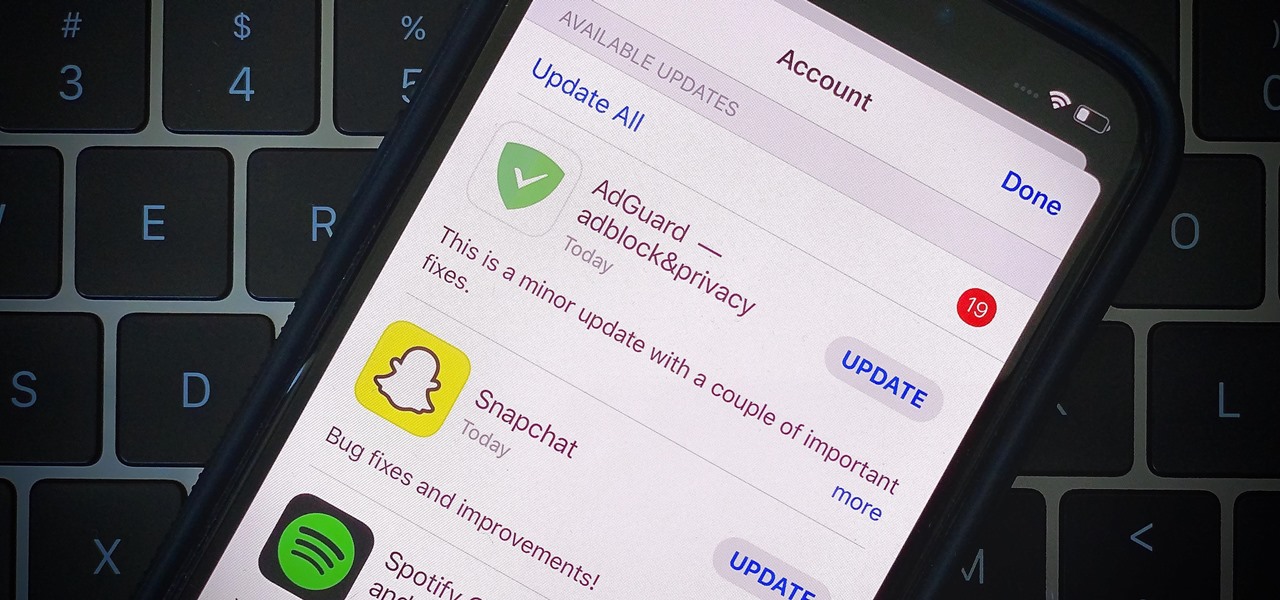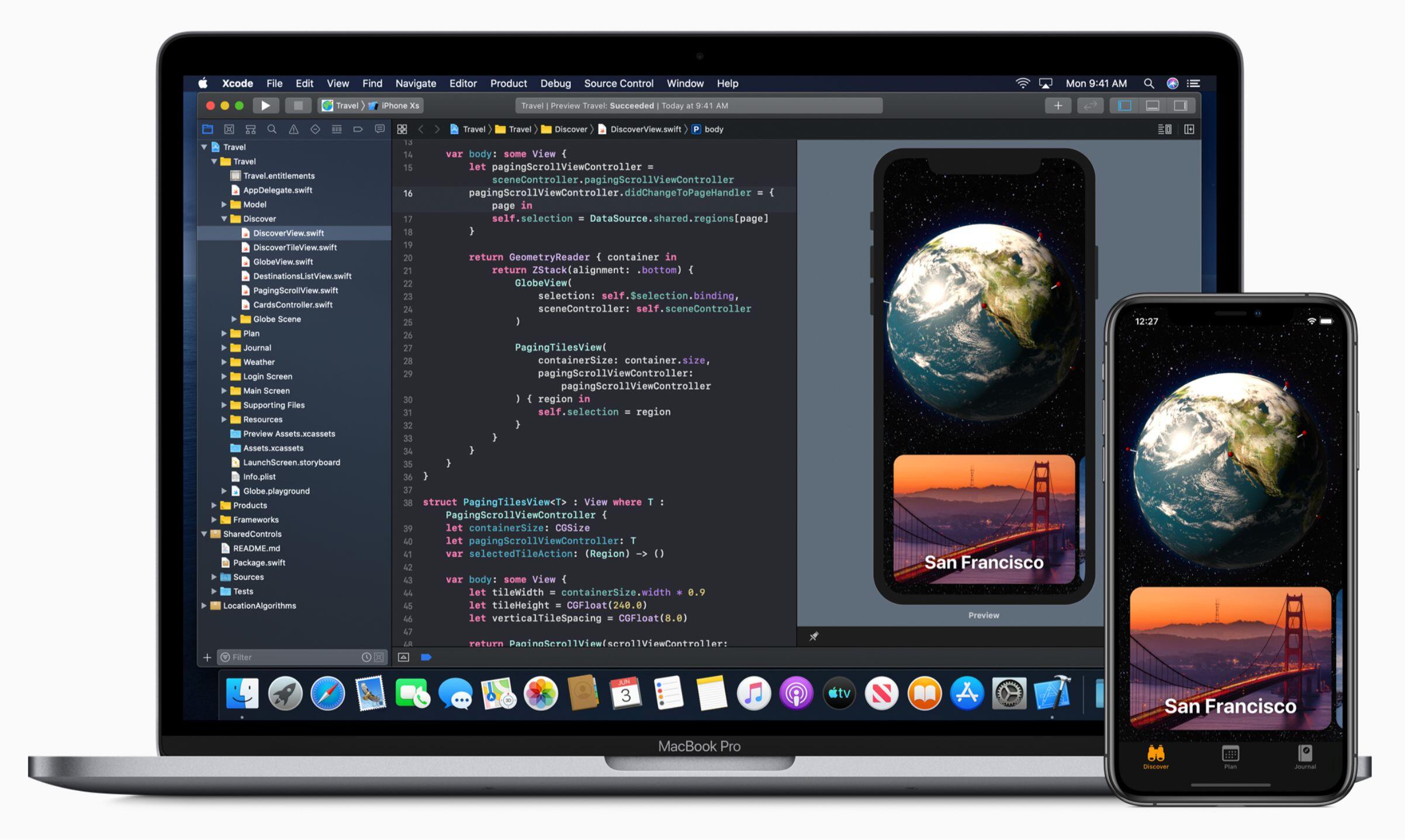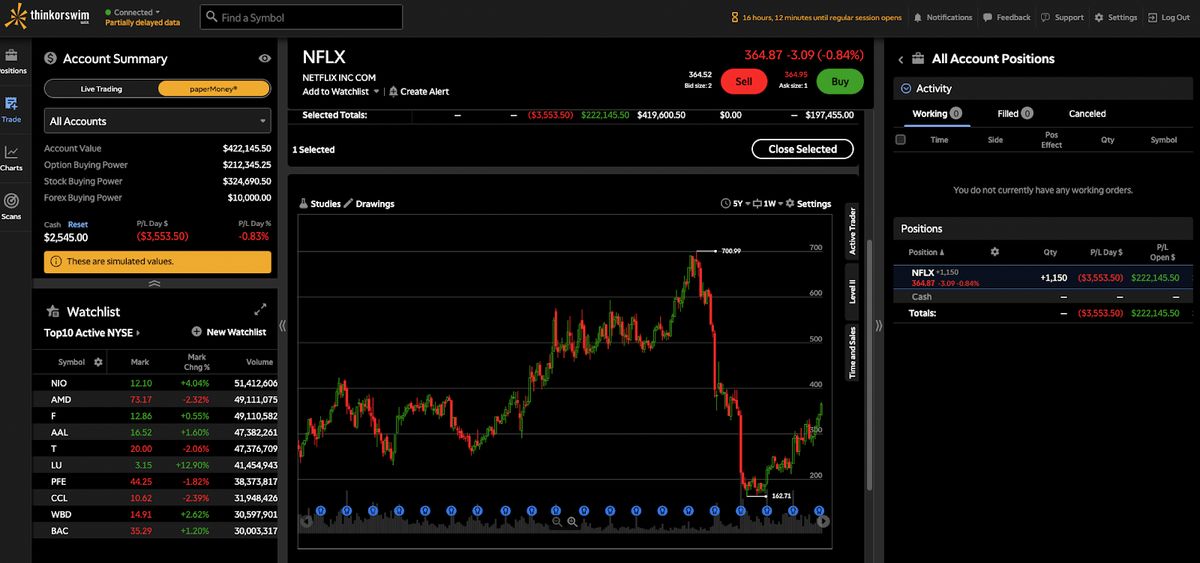Introduction
Welcome to the world of fintech! The financial technology industry has revolutionized the way we manage our money, make payments, and access financial services. With the increasing popularity and demand for fintech applications, it’s crucial for developers to leverage the right tools and technologies to build robust and user-friendly apps.
In this article, we will explore the use of React Native for building fintech applications. React Native is a powerful open-source framework that allows developers to create cross-platform mobile apps using JavaScript and React. By leveraging a single codebase, developers can build apps that run seamlessly on both iOS and Android devices.
So why choose React Native for building fintech apps? There are several reasons that make it an ideal choice. First and foremost, React Native offers a high degree of code reusability, allowing developers to efficiently build and maintain a single codebase for multiple platforms. This not only saves time but also reduces the complexity of development and simplifies the maintenance process.
Additionally, React Native provides access to a vast ecosystem of open-source libraries and components. This means developers can leverage pre-built solutions for common fintech functionalities, such as authentication, payment gateways, and data visualization. This enables faster development and ensures the app meets industry standards.
Another advantage of React Native is its performance. By using native components, React Native apps can achieve near-native performance, providing users with a seamless and responsive experience. This is crucial for fintech apps, as users expect quick and reliable access to their financial information and services.
Furthermore, React Native has a vibrant and active community of developers, who contribute to the framework’s continuous improvement and provide support through forums, tutorials, and libraries. This ensures that developers have access to resources and assistance when encountering challenges during the development process.
In the following sections, we will guide you through the process of building a fintech app using React Native. From setting up the development environment to implementing key features such as authentication, user management, and integration with APIs, we will cover all the essential steps to create a fully functional app.
So let’s dive in and discover the power of React Native for building fintech apps!
What is Fintech?
Fintech, short for financial technology, refers to the use of technology and innovation to deliver financial products and services. It encompasses a range of applications, platforms, and technologies that aim to enhance the efficiency, accessibility, and convenience of financial transactions and services.
Fintech has gained significant traction in recent years, disrupting traditional financial institutions and reshaping the way people handle their finances. It has brought about a wave of innovation and has democratized financial services by making them more accessible to a broader audience.
With fintech, consumers can access a wide array of financial services conveniently from their smartphones or computers. These services include online banking, digital payments, peer-to-peer lending, crowdfunding, robo-advisory, cryptocurrency, and much more.
One of the key drivers of fintech’s success is its ability to provide personalized and tailored financial solutions. Through data analytics and artificial intelligence, fintech applications can collect and analyze user behavior, financial habits, and preferences to offer personalized recommendations, budgeting tools, and financial planning advice.
Fintech has also revolutionized the payment landscape. Digital payment solutions, such as mobile wallets, contactless payment systems, and QR code payments, have made it easier, faster, and more secure for individuals and businesses to make transactions. These innovations have not only simplified the payment process but have also expanded financial inclusion, allowing people in underserved areas to participate in the digital economy.
Furthermore, fintech has transformed investment and wealth management. Robo-advisory platforms use algorithms and machine learning to provide automated investment advice and portfolio management, making it more accessible and affordable for individuals to invest and grow their wealth.
Overall, fintech has revolutionized the financial industry by bridging the gap between traditional financial services and modern technology. It has empowered individuals and businesses with greater control over their finances, streamlined processes, and expanded access to financial services. The continuous evolution of fintech is poised to shape the future of finance and unlock new opportunities for innovation and growth.
Why Build a Fintech App Using React Native?
When it comes to developing a fintech app, choosing the right technology stack is crucial for success. React Native, an open-source framework developed by Facebook, has emerged as a popular choice for building cross-platform mobile applications, including fintech apps. Here are several reasons why you should consider using React Native for your fintech app:
1. Cross-platform Compatibility: React Native allows you to develop a single codebase that can run on both iOS and Android devices. This significantly reduces development time and cost, as you don’t need separate teams and resources for each platform.
2. Faster Development: With React Native, you can leverage pre-built components and libraries to expedite the development process. The extensive ecosystem of open-source packages for React Native includes numerous fintech-specific libraries and modules, which can help you implement common features such as payment gateways, data encryption, and financial analytics with ease.
3. Native-like Performance: React Native utilizes native components, which allows your app to deliver near-native performance. This means your fintech app will have fast loading times and smooth animations, creating a seamless user experience.
4. Cost-effective Solution: As React Native enables code reuse, you can save both time and resources by building a single app that works on multiple platforms. This eliminates the need for separate development teams, reducing overall costs.
5. Hot Reload: React Native comes with a built-in feature called Hot Reload, which enables developers to see the changes made to the code instantly without recompiling the entire application. This accelerates the development process and allows for quick iterations and bug fixing.
6. Community Support: React Native has a large and active community of developers who contribute to the framework’s growth and provide valuable resources, tutorials, and support. This means you can easily find solutions to problems or get assistance when facing challenges during the development process.
7. Seamless Integrations: React Native offers seamless integration capabilities with third-party services and APIs. This makes it easier to connect your fintech app with various financial services, payment gateways, and data providers, ensuring a smooth and secure user experience for your customers.
By leveraging React Native’s benefits, you can streamline the development process, reduce costs, and deliver a feature-rich fintech app that works seamlessly across multiple platforms. Whether you are building a personal finance management app, a digital banking platform, or an investment tracking application, React Native is a powerful tool that can help you achieve your fintech goals.
Getting Started with React Native
Before diving into building your fintech app with React Native, it’s important to have a solid understanding of the framework and its key concepts. In this section, we will guide you through getting started with React Native and setting up your development environment.
1. Install Node.js and npm: React Native requires Node.js and npm (Node Package Manager) to be installed on your system. Visit the official Node.js website, download and install the latest stable version.
2. Install React Native CLI: Once Node.js is installed, open your terminal/command prompt and install the React Native CLI globally by running the following command: npm install -g react-native-cli.
3. Install JDK and Android Studio (for Android development): If you plan to develop your app for Android, you need to install Java Development Kit (JDK) and Android Studio. JDK is required to compile and run your Java code, while Android Studio provides tools and an emulator for testing your app on Android devices.
4. Install Xcode (for iOS development): If you plan to develop your app for iOS, you need to have Xcode installed on your Mac. Xcode is the official IDE for iOS app development and provides the necessary tools and simulator for testing your app on iOS devices.
5. Create a new React Native project: Open your terminal/command prompt and navigate to the directory where you want to create your project. Run the following command to create a new React Native project: npx react-native init YourProjectName. This will generate the basic project structure and install the necessary dependencies.
6. Start the development server: In the project directory, run the command npm start or yarn start to start the development server. This server will bundle your app and provide an interface for running it on physical or virtual devices.
7. Run your app: To run your app on an Android emulator or a physical device connected via USB, use the command npm run android or yarn android. For running on an iOS simulator, use npm run ios or yarn ios.
8. Edit your app: Open the project in your preferred code editor and start editing the files in the src directory. React Native uses JavaScript and JSX syntax for defining components and logic.
With these steps, you have successfully set up your development environment for building React Native apps. It’s now time to start exploring the structure of a React Native app and building the user interface. Stay tuned for the next section!
Setting up the Development Environment
Before you start building your fintech app using React Native, it’s essential to set up your development environment. This ensures that you have all the necessary tools and dependencies in place for smooth and efficient app development. In this section, we will walk you through the process of setting up your development environment for React Native.
1. Install Node.js and npm: React Native requires Node.js and npm (Node Package Manager) to be installed on your system. Head to the official Node.js website, download the latest stable version, and follow the installation instructions for your operating system.
2. Install a Code Editor: Choose a code editor that suits your preferences and provides excellent support for JavaScript and React Native development. Some popular ones include Visual Studio Code, Atom, and Sublime Text. Install the editor of your choice and configure any necessary extensions or plugins for React Native development.
3. Install Java Development Kit (JDK): If you plan to develop your app for Android, you need to install the Java Development Kit (JDK). React Native requires JDK to compile and run your Java code during the development process. Head to the Oracle website, download the JDK, and follow the installation instructions for your operating system.
4. Install Android Studio: Android Studio provides a complete set of tools for Android app development, including an emulator for testing your React Native app on Android devices. Download Android Studio from the official website and follow the installation instructions. During the installation process, make sure to select and install the necessary components for Android development.
5. Configure Android SDK: After installing Android Studio, you need to configure the Android Software Development Kit (SDK). Open Android Studio, go to the SDK Manager, and install the required SDK versions based on your app’s targeted Android versions. Ensure that the environment variables for the SDK are correctly set up on your system.
6. Install Xcode (for iOS development): For iOS development, you need to have Xcode installed on your Mac. Xcode is the official integrated development environment (IDE) for iOS app development and provides tools, simulators, and frameworks for building iOS apps. You can download Xcode from the Mac App Store and follow the installation instructions.
7. Configure iOS Development: After installing Xcode, open it and go to Preferences. Install the necessary simulators for iOS testing. Additionally, you may need to set up Apple Developer credentials and provisioning profiles for deploying your app on physical iOS devices or submitting it to the App Store.
8. Install React Native CLI: Open your terminal or command prompt and install the React Native CLI globally by running the following command: npm install -g react-native-cli. This will install the command-line tools necessary for creating and running React Native projects.
9. Initialize a New React Native Project: In your desired directory, use the React Native CLI to initialize a new project. Run the command npx react-native init YourProjectName to generate the project structure and install the necessary dependencies.
Once you’ve completed these steps, your development environment should be set up and ready for React Native app development. You can now start building your fintech app by diving into the structure of a React Native app and implementing the desired features. Get ready to unleash the power of React Native and create a cutting-edge fintech app!
Installing React Native and Creating a New Project
Now that your development environment is set up, the next step is to install React Native and create a new project. In this section, we will guide you through the process of installing React Native and initializing a new project.
1. Install React Native CLI: Open your terminal or command prompt and install the React Native CLI globally. Run the following command: npm install -g react-native-cli. This will install the necessary command-line tools for creating and managing React Native projects.
2. Create a new React Native project: Next, navigate to the directory where you want to create your project. Run the following command to initialize a new React Native project: npx react-native init YourProjectName. This command will create a new project folder with the specified name and generate the essential files and dependencies.
3. Install project dependencies: After creating the project, navigate into the project folder using the command cd YourProjectName. Then, install the project dependencies by running npm install or yarn install. This will install the required packages and modules defined in the project’s package.json file.
4. Start the development server: To start the development server, run the command npm start or yarn start. The development server, also known as Metro Bundler, will bundle your app’s JavaScript code and provide a local server for running your app on physical or virtual devices.
5. Run your app on a physical device: To run your app on a physical device, you need to connect the device to your computer via USB. Make sure that USB debugging is enabled on your Android device. Then, run the command npm run android or yarn android to build the app and install it on the connected device.
6. Run your app on a simulator/emulator: If you want to run your app on an Android or iOS emulator/simulator, make sure that the emulator/simulator is already set up and running. For Android, run the command npm run android or yarn android. For iOS, run npm run ios or yarn ios. This will build the app and launch it on the specified emulator/simulator.
7. Edit your app: You can now start editing your app by modifying the JavaScript files in the src directory. React Native uses JavaScript and JSX syntax for defining components and logic. Open your preferred code editor and make the desired changes to create your fintech app.
With these steps, you have successfully installed React Native and created a new project. You are now ready to start building your fintech app using the power and flexibility of React Native. In the next sections, we will explore the structure of a React Native app and guide you through building the user interface and implementing various features.
Understanding the Structure of a React Native App
As you begin building your fintech app using React Native, it’s crucial to have a solid understanding of the structure of a React Native app. By understanding the different components and key concepts, you’ll be able to organize and manage your app effectively. Let’s dive into the structure of a typical React Native app:
1. Entry Point: The entry point of a React Native app is the index.js file. This is where the app is initialized, and the root component is rendered. The index.js file sets up the necessary configuration and imports the App component.
2. App Component: The App.js (or App.tsx for TypeScript) file represents the root component of the app. It acts as a container for other components and is responsible for managing the app’s overall state and navigation.
3. Screens: Screens are individual components that represent different screens or pages of your app, such as the login screen, dashboard, transaction history, and settings. Each screen is responsible for rendering its content and handling user interactions.
4. Navigation: React Native offers various navigation libraries that allow you to navigate between different screens in your app. Popular libraries include React Navigation and React Native Navigation. The navigation logic is typically handled in the App.js file or a separate dedicated navigation file.
5. Components: React Native makes extensive use of reusable and composable components. Components can be functional components or class components and represent different UI elements or functional modules of your app. You can create custom components to reuse throughout your app, such as buttons, input fields, and cards.
6. Services: Services are helper functions or modules that handle specific tasks or interact with APIs. For example, you might have a service for handling authentication, data storage, or making API calls to retrieve financial data.
7. Redux Store: Redux is a popular state management library used in React Native apps. The Redux store holds the global state of your app, allowing components to access and update data in a predictable and synchronized manner. The structure and organization of the Redux store depend on your app’s specific needs.
8. Assets: The assets folder contains static assets for your app, such as images, fonts, and other media files. These assets can be imported and used throughout your components.
9. Styles: React Native uses a combination of CSS-in-JS libraries, inline styles, and style sheets to define the styles for components. Styles determine the appearance and layout of UI elements, such as colors, typography, spacing, and positioning.
This is a high-level overview of the structure of a typical React Native app. It’s important to note that the specific structure may vary depending on your app’s requirements and the architectural patterns you choose to follow. As you continue building your fintech app, you’ll gain a deeper understanding of the structure and how to organize and manage your code effectively.
Building the User Interface
The user interface (UI) is a critical component of any fintech app as it determines how users interact with and navigate through the app. In this section, we will explore the process of building the user interface of your fintech app using React Native.
1. Planning the UI: Before diving into implementation, it’s crucial to plan your app’s UI design. Consider the features and functionality your app will offer, and create wireframes or mockups to visualize the layout and flow. This planning phase will help you identify the necessary components and UI elements required.
2. Breaking it down into Components: Once you have a clear vision of your app’s interface, start breaking it down into smaller reusable components. Identify the different sections and UI elements such as headers, navigation bars, input fields, buttons, lists, and cards. Each component should have its own responsibility and should be designed with reusability in mind.
3. Styling the Components: React Native offers various approaches for styling components. You can use inline styles, style objects, or external style sheets. Consider using a CSS-in-JS library, such as Styled Components or CSS Modules, for a more organized and reusable styling approach. Define styles for each component, including colors, fonts, spacing, and alignments.
4. Handling User Interactions: Implement event handlers for user interactions, such as button clicks, form submissions, or navigation actions. Utilize React Native’s touch events and Input components to capture user input and respond accordingly. Ensure proper validation and error handling for user inputs to provide a smooth and intuitive user experience.
5. Implementing Navigation: Navigation is a crucial aspect of a fintech app. Use a navigation library like React Navigation or React Native Navigation to navigate between screens and create a consistent flow for users. Implement stack navigation for hierarchical screens, tab navigation for top-level navigation, and drawer navigation for side menu options.
6. Incorporating Data Visualization: For financial apps, data visualization plays a significant role in helping users analyze and understand their financial information. Utilize React Native charting libraries, such as Victory Charts or React Native SVG charts, to create visually appealing graphs and charts for displaying transaction histories, investment portfolios, and financial summaries.
7. Testing the UI: As you build the user interface, ensure thorough testing across different devices and screen sizes to identify and fix any layout or responsiveness issues. Make use of the React Native testing framework, such as Jest, along with device emulators/simulators or physical devices, to perform automated and manual UI testing.
8. Iterating and Refining: UI design is an iterative process. Continuously gather user feedback, conduct usability testing, and fine-tune the UI based on user preferences. Pay attention to user experience (UX) principles, accessibility guidelines, and industry best practices to create an intuitive and user-friendly interface.
By following these steps, you can effectively build a user interface that provides an engaging and seamless experience for your fintech app users. Remember to prioritize simplicity, consistency, and clear navigation to ensure users can easily navigate through the app and achieve their financial goals.
Using UI Components in React Native
React Native provides a wide range of built-in UI components that allow you to create visually appealing and interactive interfaces for your fintech app. These components cover various aspects of app development, including user input, data display, navigation, and more. In this section, we will explore some commonly used UI components in React Native.
1. Text: The Text component is used for displaying text in your app. It supports basic styling properties like color, font size, and alignment, allowing you to customize the appearance of your text.
2. TextInput: The TextInput component allows users to enter text input in your app. It supports keyboard types, secure text input, placeholder text, and various other features for handling user input and validation.
3. Button: The Button component provides a simple way to render a clickable button in your app. It supports onPress event handling, allowing you to trigger actions when the button is pressed.
4. Image: The Image component is used for displaying images in your app. It supports loading images from local resources or remote URLs, and provides features like caching, resizing, and image manipulation.
5. ScrollView: The ScrollView component allows you to create scrollable content in your app. It’s useful for displaying large amounts of content that need to be scrolled vertically or horizontally.
6. FlatList: The FlatList component is an efficient way to render a list of items in your app. It dynamically renders only the items that are currently visible on the screen, improving performance for large lists.
7. TouchableOpacity: The TouchableOpacity component provides touch feedback when the user presses it. It’s commonly used for creating interactive elements like buttons and clickable list items.
8. Modal: The Modal component allows you to present a modal view on top of your app’s content. It’s useful for displaying additional information or capturing user input without navigating to a different screen.
9. Picker: The Picker component provides a dropdown menu for selecting a value from a list of options. It’s used for creating select fields or dropdown menus in your app.
10. WebView: The WebView component allows you to render web content within your app. It’s useful for integrating web-based features or displaying webpages, such as financial news or market data, within your app.
These are just a few examples of the UI components available in React Native. By leveraging these components, along with styling and layout techniques, you can create a visually appealing and interactive user interface for your fintech app. Remember to explore the React Native documentation and community resources to discover more UI components that suit your app’s specific needs.
Styling the App with CSS-in-JS
In React Native, styling is an essential aspect of creating visually appealing and consistent user interfaces. While React Native provides various options for styling components, one popular approach is using CSS-in-JS libraries. CSS-in-JS allows you to write your styles directly in JavaScript files, providing a more modular and component-centric approach to styling. In this section, we will explore the process of styling your React Native app using a CSS-in-JS library.
1. Choose a CSS-in-JS library: There are several CSS-in-JS libraries available for React Native, each with its own syntax and features. Popular libraries include Styled Components, Emotion, and CSS Modules. Choose the library that best fits your project’s requirements and install it as a dependency.
2. Define styled components: With a CSS-in-JS library like Styled Components, you can define styled versions of React Native components. Import the necessary functions from the library and use them to create styled components. You can define styles within the component definition or in separate style objects.
3. Use props-based styling: CSS-in-JS libraries often support props-based styling, allowing you to conditionally apply styles based on component props. This allows for dynamic styling, such as changing colors, sizes, or layouts based on user interactions or state changes.
4. Reuse styles with components: CSS-in-JS libraries excel at promoting code reusability. You can create reusable styles and components by combining or extending existing styled components. This saves time and effort by eliminating the duplication of styles and promoting a consistent design across your app.
5. Manage global styles: In larger apps, you may need to manage global styles that are applied across multiple components. CSS-in-JS libraries provide mechanisms for defining and managing global styles, such as creating theme objects or using global style providers.
6. Handle media queries: CSS-in-JS libraries often support media queries, allowing you to apply different styles based on the device’s screen size or orientation. This ensures your app’s layout and design adapt to various devices and screen resolutions.
7. Optimize styles: As your app grows, it’s crucial to optimize your styles for performance. CSS-in-JS libraries offer features like automatic vendor prefixing, minification, and tree shaking to reduce the size of your final bundled styles.
8. Test and iterate: Just like with any other aspect of your app, ensure thorough testing of your styled components. Verify that styles are correctly applied, responsive, and visually appealing across various screen sizes and devices. iterate based on user feedback.
By utilizing a CSS-in-JS library, you can improve the maintainability and scalability of your React Native app’s styles. The ability to write styles in JavaScript offers flexibility, code organization, and the ability to leverage the full power of JavaScript. Explore the documentation and features of your chosen CSS-in-JS library to unlock the full potential of styling in React Native.
Handling User Input and Form Validation
User input and form validation are critical aspects of any fintech app. Ensuring that user input is accurate, complete, and meets specific criteria is essential for maintaining data integrity and providing a seamless user experience. In this section, we will explore best practices for handling user input and implementing form validation in your React Native app.
1. Capture User Input: React Native provides various components, such as TextInput and Picker, for capturing user input. Enable appropriate props, such as onChangeText or onValueChange, to capture the input value as the user interacts with the input component.
2. Input Validation: Implement input validation to ensure that the data entered by the user conforms to the specified requirements. Validate inputs against predefined rules, such as length constraints, required fields, or specific patterns, using regular expressions or validation libraries.
3. Real-time Validation: Provide real-time feedback to users by validating input as they type. Show validation errors or success messages near the corresponding input fields. This approach helps users correct errors immediately and prevents them from submitting invalid data.
4. Error Messaging: Display clear and descriptive error messages near the relevant input fields to inform users about any validation errors. The messages should be specific and provide guidance on how to correct the error. Consider using tooltips or inline error indicators to make the interface more intuitive.
5. Form State Handling: Manage the state of your form inputs using React Native’s state or state management libraries like Redux or Mobx. Update the state as the user enters or modifies input values and validate the entire form before submitting.
6. Submit Handling: Implement a submit function to handle the form submission. Validate all inputs once again before submission to ensure data integrity. If the data is incomplete or contains errors, highlight the issues and prevent submission until the issues are resolved.
7. Disabling Submit Button: Disable the submit button until all required inputs are filled correctly. This prevents users from submitting the form prematurely and provides a visual cue that the form is not yet ready for submission.
8. Feedback and Confirmation: After the form is successfully submitted, provide appropriate feedback to the user. Display a success message or redirect the user to a relevant page. If the submission fails, show an error message and allow the user to retry or get assistance.
9. Accessibility Considerations: Ensure that your form inputs and validation messages are accessible to users with disabilities. Use appropriate accessibility attributes, such as aria-label, to associate inputs with labels, and provide descriptive error messages to assist users in understanding and resolving validation issues.
10. Test Form Validation: Thoroughly test your form validation logic and user input handling. Conduct unit tests to verify that input validation functions as expected and end-to-end tests to ensure that the entire form submission process works seamlessly.
By following these practices, you can create a robust and user-friendly form input and validation system in your React Native fintech app. Proper input handling and validation contribute to data accuracy, improve the user experience, and instill user trust in your app’s security and functionality.
Implementing Authentication and User Management
Authentication and user management play a critical role in fintech apps, ensuring that only authorized users can access sensitive financial information and perform secure transactions. In this section, we will explore the best practices for implementing authentication and user management in your React Native app.
1. User Registration: Implement a user registration process to allow users to create new accounts. Capture necessary information such as email, username, and password. Utilize secure password storage mechanisms, such as bcrypt or Argon2, to protect user passwords.
2. Login and Logout: Implement a secure login mechanism to authenticate users. Utilize authentication techniques like token-based authentication or session-based authentication. Store the authentication token securely and ensure it is sent with each subsequent API request. Provide a logout functionality to allow users to securely log out of their accounts.
3. Password Reset: Implement a password reset feature that allows users to reset their passwords if they forget them. This can be done through email verification or security questions. Apply proper security measures to prevent unauthorized access to user accounts during the password reset process.
4. Account Verification: Implement an account verification process to ensure that user accounts are valid and legitimate. Send a verification email with a unique token to the user’s email address and require the user to verify their account before they can access certain features or perform specific actions.
5. User Profile Management: Allow users to manage their profiles by providing options such as updating personal information, profile pictures, and contact details. Implement proper validation and authorization checks to prevent unauthorized access or modification of user profiles.
6. Role-based Access Control: If your fintech app has different user roles, such as admin or regular user, implement role-based access control (RBAC) to control the permissions and access levels granted to each role. This ensures that different users have the appropriate privileges and restrictions within the app.
7. Two-Factor Authentication (2FA): Consider implementing two-factor authentication to provide an added layer of security. This can involve using SMS verification codes, email verification codes, or biometric authentication methods to authenticate users before granting access to their accounts.
8. Secure Storage and Encryption: Safeguard user data by securely storing sensitive information and employing encryption techniques. Use secure storage mechanisms, such as Keychain for iOS and AsyncStorage for Android, to store authentication tokens and other sensitive data securely on the device.
9. Audit Trails and Security Monitoring: Implement logging and monitoring mechanisms to track user actions, detect suspicious activities, and provide an audit trail for compliance and security purposes. Regularly monitor, analyze, and respond to security events to ensure the integrity and confidentiality of user data.
10. Testing and Security Audits: Thoroughly test your authentication and user management functionality to identify and fix any vulnerabilities or security loopholes. Perform security audits periodically to assess the robustness of your authentication system and ensure compliance with industry best practices and security standards.
By implementing these authentication and user management best practices, you can provide a secure and reliable experience for users of your React Native fintech app. Building trust through strong authentication and safeguarding user data is essential in the fintech industry, where security and privacy are paramount.
Managing State with Redux
Managing state effectively is crucial in any complex React Native application, including fintech apps. Redux is a popular state management library that provides a predictable and centralized way to handle application state. In this section, we will explore how to manage state using Redux in your React Native app.
1. Install Redux: Start by installing Redux and its related packages. Run the command npm install redux react-redux redux-thunk or yarn add redux react-redux redux-thunk to install these dependencies.
2. Define Actions: Actions are plain JavaScript objects that describe an event or user interaction that triggers a state change. Define action types as constants and create action creators that return the action objects.
3. Create Reducers: Reducers specify how the application’s state should change in response to actions. Each reducer handles a specific part of the state and determines how that part should be updated based on the dispatched action. Combine multiple reducers into a rootReducer using the combineReducers function from Redux.
4. Initialize the Store: Create a Redux store by calling the createStore function from Redux, passing in the rootReducer. You can also apply middleware, such as redux-thunk, to handle asynchronous actions.
5. Connect Components: Use the connect function from the react-redux library to connect your components to the Redux store. This allows your components to access and update the state using the mapStateToProps and mapDispatchToProps functions.
6. Dispatch Actions: Dispatch actions from your components using the dispatch function provided by Redux. These actions will trigger the corresponding reducers to update the state.
7. Access State: Retrieve state values in your components using mapStateToProps. This function maps the state from the Redux store to the component’s props, allowing you to access the state values easily.
8. Update State: Update the state by dispatching actions from your components using mapDispatchToProps. This function maps the action creators to the component’s props, allowing you to trigger state changes by invoking the action creators.
9. Use Selectors: Consider using selectors to extract and derive specific data from the state. Selectors provide a way to retrieve computed state values separately, improving performance and code maintainability.
10. Testing: Test your reducers and actions to ensure they are working correctly. Write unit tests to verify that the state changes as expected when actions are dispatched.
By implementing Redux for state management in your React Native app, you can centralize and manage the application state in a scalable and predictable manner. Redux simplifies data flow, improves debugging, and allows for better maintainability and collaboration. However, it’s important to carefully consider whether using Redux is appropriate for the size and complexity of your project, as it may introduce additional complexity in smaller applications.
Integrating APIs and Fetching Financial Data
Integrating external APIs is a crucial aspect of developing fintech apps as it allows you to fetch real-time financial data, perform transactions, and access other financial services. In this section, we will explore how to integrate APIs and fetch financial data in your React Native app.
1. Identify the APIs: Determine the APIs you need to integrate into your app based on the financial services or data you want to provide. This could include APIs for bank account data, payment gateways, stock market data, cryptocurrency data, or any other relevant financial information.
2. Obtain API Access: Sign up for and obtain access to the required APIs. Register for developer accounts, obtain API keys, and familiarize yourself with the API documentation provided by the respective service providers.
3. Make API Requests: Use libraries like axios or fetch to make HTTP requests to the APIs from your React Native app. Utilize the appropriate endpoint URLs and include the necessary authentication credentials or API keys in the request headers or parameters.
4. Handle Asynchronous Operations: API requests are asynchronous operations, meaning they take time to complete. Handle the asynchronous nature of API requests using asynchronous code patterns such as promises or async/await. This ensures that your app continues to function smoothly without getting blocked while waiting for the API responses.
5. Parse API Responses: Process the API responses and extract the relevant financial data from the returned JSON or XML data. Use JavaScript methods or libraries like jsonparse or xml2js to parse and transform the raw API data into a usable format within your app.
6. Update the App’s State: Store the fetched financial data in the app’s state, whether in a Redux store or using React’s built-in state management. This allows you to access and manipulate the financial data throughout your app, keeping it up to date and providing a seamless user experience.
7. Implement Error Handling: Handle potential errors that may occur during API requests or responses, such as network errors or API response errors. Implement proper error handling mechanisms to display informative error messages to users and gracefully handle any exceptions that may occur.
8. Implement Caching: To improve performance and reduce unnecessary API calls, implement caching mechanisms. Cache frequently accessed financial data for a specific amount of time to minimize the number of API requests and provide a faster user experience.
9. Test API Integration: Test your API integration thoroughly to ensure that the API calls and data retrieval are functioning as expected. Write unit tests to verify the integration with the APIs and perform integration tests to ensure proper interaction with the financial API services.
10. Monitor API Usage: Keep track of your app’s API usage and monitor any usage limits or quotas set by the API providers. Stay up to date with any changes or updates to the APIs and make necessary adjustments to your app’s integration accordingly.
By effectively integrating APIs and fetching financial data, you can provide valuable and up-to-date financial information to your users, enabling them to make informed decisions and interact with financial services seamlessly within your React Native fintech app.
Implementing Transactions and Payment Features
Transactions and payment features are essential components of fintech apps, allowing users to transfer funds, make payments, and manage their financial transactions. In this section, we will explore how to implement transactions and payment features in your React Native app.
1. Establish Payment Gateway Integration: Select a payment gateway provider that suits your app’s needs and set up the necessary integration. This involves signing up for a payment gateway account, obtaining API credentials, and configuring your app to process payment transactions securely.
2. Handle Payment Form: Design and implement a payment form interface in your app to capture relevant payment details from the user, such as card information, billing address, and payment amount. Utilize input validation to ensure the accuracy and completeness of the entered payment information.
3. Securely Transmit Payment Data: Ensure that sensitive payment data is transmitted securely by using encryption and following industry-standard security practices. Use secure communication protocols such as HTTPS and take advantage of tokenization or encryption mechanisms provided by the payment gateway for added security.
4. Implement Payment Authorization: Integrate the payment gateway’s API to authorize and verify payment transactions. Send the payment details to the payment gateway and handle the response to determine whether the transaction is authorized or declined.
5. Process Payment Transactions: Once a payment transaction is authorized, implement the logic to process the payment. This may involve sending a request to the payment gateway to initiate the transaction and receiving a confirmation or response that signifies the successful completion of the payment.
6. Handle Transaction Status Updates: Implement logic to handle transaction status updates from the payment gateway. This allows you to keep track of the status of payment transactions in your app and provide real-time updates to users, such as transaction success or failure notifications.
7. Display Transaction History: Provide a transaction history view within your app, allowing users to conveniently view and track their past transactions. Fetch and display transaction data from your backend or the payment gateway’s API and present it in a user-friendly way, including transaction date, amount, and status.
8. Support Multiple Currencies: If your app supports transactions in multiple currencies, handle currency conversions and ensure that the payment amount is accurately converted based on the current exchange rates. Utilize reliable currency exchange APIs or services to facilitate seamless currency conversions.
9. Handle Refunds and Disputes: Implement functionality to handle refunds or disputes raised by users. Integrate the payment gateway’s refund API to initiate refunds, and develop a process to address any disputes that may arise, ensuring prompt resolution and maintaining user satisfaction.
10. Test Payment Transactions: Test the payment functionality extensively to ensure that transactions are processed correctly. Perform end-to-end testing with various scenarios, including successful transactions, declined transactions, and error handling, to validate the robustness and reliability of your payment features.
By effectively implementing transactions and payment features, you can provide users with a seamless and secure financial experience within your React Native fintech app. Ensure compliance with industry standards, adhere to security best practices, and prioritize the user experience to build trust and confidence in your app’s payment capabilities.
Testing and Debugging the App
Testing and debugging are crucial steps in the development lifecycle of a React Native app. Thorough testing ensures that your app functions as expected, while effective debugging helps identify and resolve any issues or bugs that may arise. In this section, we will explore the importance of testing and debugging, along with best practices for ensuring the quality of your app.
1. Unit Testing: Use unit tests to verify the functionality of individual components or functions in isolation. Testing frameworks such as Jest provide a simple and powerful way to write and execute unit tests for your React Native app.
2. Component Testing: Test the behavior and rendering of your app’s components to ensure they respond correctly to different scenarios and user interactions. Mock external dependencies or services for more focused component testing.
3. Integration Testing: Perform integration tests that cover the interaction between different components or modules within your app. These tests ensure that the different parts of your app work seamlessly together.
4. End-to-End (E2E) Testing: Conduct end-to-end tests to simulate real user scenarios and workflows. E2E testing frameworks like Detox or Appium allow you to automate interactions with your app and validate its behavior across multiple screens and user flows.
5. Continuous Integration (CI): Incorporate a CI system into your development process to automatically build, test, and deploy your app with each code change. This allows for early detection of issues and ensures the stability of your app across different platforms and devices.
6. Debugging Tools: Leverage the debugging capabilities provided by React Native and its ecosystem. Tools like React Native Debugger, the Chrome Developer Tools, or the React Native CLI Debugger can help identify and resolve issues by providing insights into the app’s state and code flow.
7. Logging and Error Reporting: Implement a robust logging and error reporting mechanism in your app to capture and track any errors or exceptions. Utilize tools like Bugsnag or Sentry to gather error reports, stack traces, and user feedback to identify and fix issues efficiently.
8. Device and Emulator Testing: Test your app on various physical devices and emulators/simulators to ensure compatibility and optimal performance across different screen sizes, platforms, and operating system versions.
9. Performance Testing: Evaluate the app’s performance by measuring metrics such as load times, rendering speed, and memory consumption. Performance monitoring tools like React Native Performance provide insights into performance bottlenecks and help optimize your app’s performance.
10. User Acceptance Testing (UAT): Involve real users in the testing process by conducting user acceptance tests. Gather feedback, conduct surveys, and perform usability testing to validate the app’s functionality, user experience, and overall satisfaction.
By incorporating thorough testing and effective debugging practices throughout your React Native app development cycle, you can ensure a high-quality and reliable app. Regularly test, iterate, and refine your app to provide an exceptional user experience while maintaining the stability and performance of your fintech app.
Deploying the App
Once you have developed and thoroughly tested your React Native app, it’s time to deploy it to the intended platforms. Deploying your app allows users to access and install it on their devices. In this section, we will explore the steps involved in deploying your React Native app.
1. Generate Production Builds: Before deploying your app, generate production builds for the relevant platforms (iOS and Android). For iOS, create an iOS build using Xcode’s archive feature. For Android, generate a signed APK using the Android Studio’s Generate Signed Bundle or APK option.
2. App Store Provisioning (iOS): To distribute your app on the Apple App Store, obtain the necessary provisioning profiles and certificates. Create an app record on App Store Connect, configure the app’s settings, and upload the generated iOS build using the App Store Connect portal.
3. App Store and Google Play Store Guidelines: Ensure that your app adheres to the guidelines and requirements set by the app stores (Apple App Store and Google Play Store). Familiarize yourself with their respective policies regarding content, functionality, design, and any other guidelines that may apply to your app.
4. App Store Optimization (ASO): Optimize your app’s store listings by conducting App Store Optimization. This involves optimizing the app’s title, description, keywords, and visual assets (such as app icons and screenshots) to improve its visibility in search results and attract more potential users.
5. Release and Beta Testing (iOS): If you want to release your app to a limited set of users for testing purposes, utilize TestFlight, Apple’s platform for beta testing iOS apps. Invite users to test your app by providing their email addresses through TestFlight, and distribute a beta build for their testing and feedback.
6. Release and Beta Testing (Android): For Android, you can leverage Google Play’s testing tracks, including alpha and beta testing tracks, to distribute your app to specific groups of users for testing and gather feedback before releasing it to the public.
7. Over-the-Air (OTA) Distribution: For internal testing or distributing builds to a limited number of users, you can use services like Firebase App Distribution or Microsoft App Center to streamline the process. These services allow you to distribute beta builds directly to registered testers over the air.
8. App Updates: Ensure a smooth update process for your users by periodically releasing updates that include bug fixes, performance improvements, and new features. Regularly communicate with your users to inform them about app updates and the benefits they bring.
9. Monitoring and Crash Reporting: Deploying your app is not the end of the development process. Implement crash reporting and monitoring tools, such as Firebase Crashlytics or Microsoft App Center, to track app crashes and gather insights about user behavior, performance, and potential issues.
10. Respond to User Feedback: Actively engage with your app’s users and encourage them to provide feedback, ratings, and reviews. Pay attention to their feedback and promptly respond to their concerns and suggestions, which will help you improve your app and maintain a positive user experience.
By following these steps, you can deploy your React Native app effectively and make it available to your target audience. Continuously improving and maintaining your app based on user feedback and market trends will contribute to its success and ensure that your users have a positive experience with your fintech app.
Conclusion
Building a fintech app using React Native opens up endless possibilities for creating innovative and user-friendly financial solutions. Throughout this article, we have explored essential steps and best practices for developing a successful fintech app using React Native.
We began by understanding the concept of fintech and why React Native is an ideal choice for building fintech applications. We then delved into setting up the development environment, installing React Native, and understanding the app’s structure.
Next, we covered different aspects of app development, including building the user interface with UI components, styling the app with CSS-in-JS, handling user input and form validation, implementing authentication and user management, managing state with Redux, integrating APIs, fetching financial data, and implementing transactions and payment features.
We also discussed the importance of testing and debugging the app to ensure its stability and reliability. Furthermore, we explored how to effectively deploy the app to make it accessible to the intended users.
Remember that the journey doesn’t end after deployment. Continually improving and updating the app, responding to user feedback, and ensuring security and performance are ongoing processes that contribute to the success of your fintech app.
By following these best practices and adopting a user-centric approach, you can create a powerful and secure fintech app that meets the needs of your target audience. Stay up-to-date with industry trends, continuously enhance your app’s features, and adapt to the changing needs and expectations of your users for long-term success in the competitive fintech landscape.

























